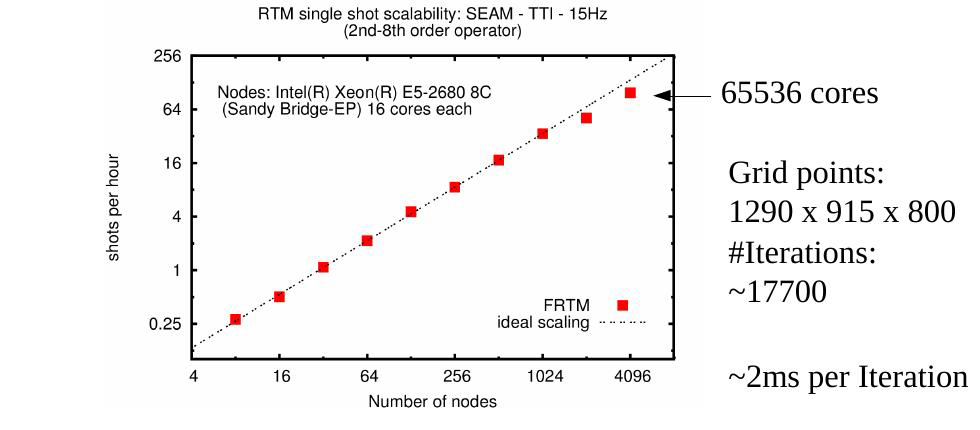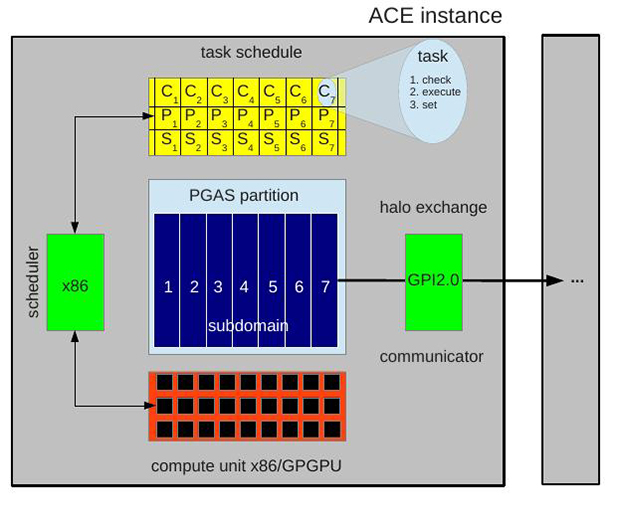By using proprietary HPC tools we obtain a massively parallel and robust implementation of RTM that combines the necessary degree of accuracy with ultimate efficiency. Our particulary designed random perturbation boundary conditions make the software free of any I/O of intermediate results that would typically be of multi-TeraByte scale for each of the 10000s of shots. This I/O is quite often a major reason why other implementations fail in computing large scale problems. We use fully optimized finite difference stencils of various order for solving the wave equation for isotropic, VTI, and TTI velocity models. Our RTM is integrated into ACE (Asynchronous Constraint Execution) framework.
High parallel efficiency due to ACE:
Due to fine-granular decomposition of the migration output volume and the dynamic assignment of partial jobs of the total migration job to the cores of the compute cluster we achieve an extremely high parallel efficiency and, thus, nearly perfect scalibilty of the migration even for such extreme cases as running a single shot migration on many thousands of computes cores. The allocation of compute resources
to the complete migration job can be done dynamically, i.e. compute nodes can be added or removed during runtime of the migration - this flexibility is highly desirable in production environments.
Adaptive stacking of single shot migration results optimizes the signal/noise ratio. We offer RTM in 3D, but also have an optimized 2D version. Our RTM can also run in forward modelling mode. For this application, the random pertubation boundary condition is replaced by absorbing boundary condition and the user can specify source-receiver layout with a high degree of flexibility.


